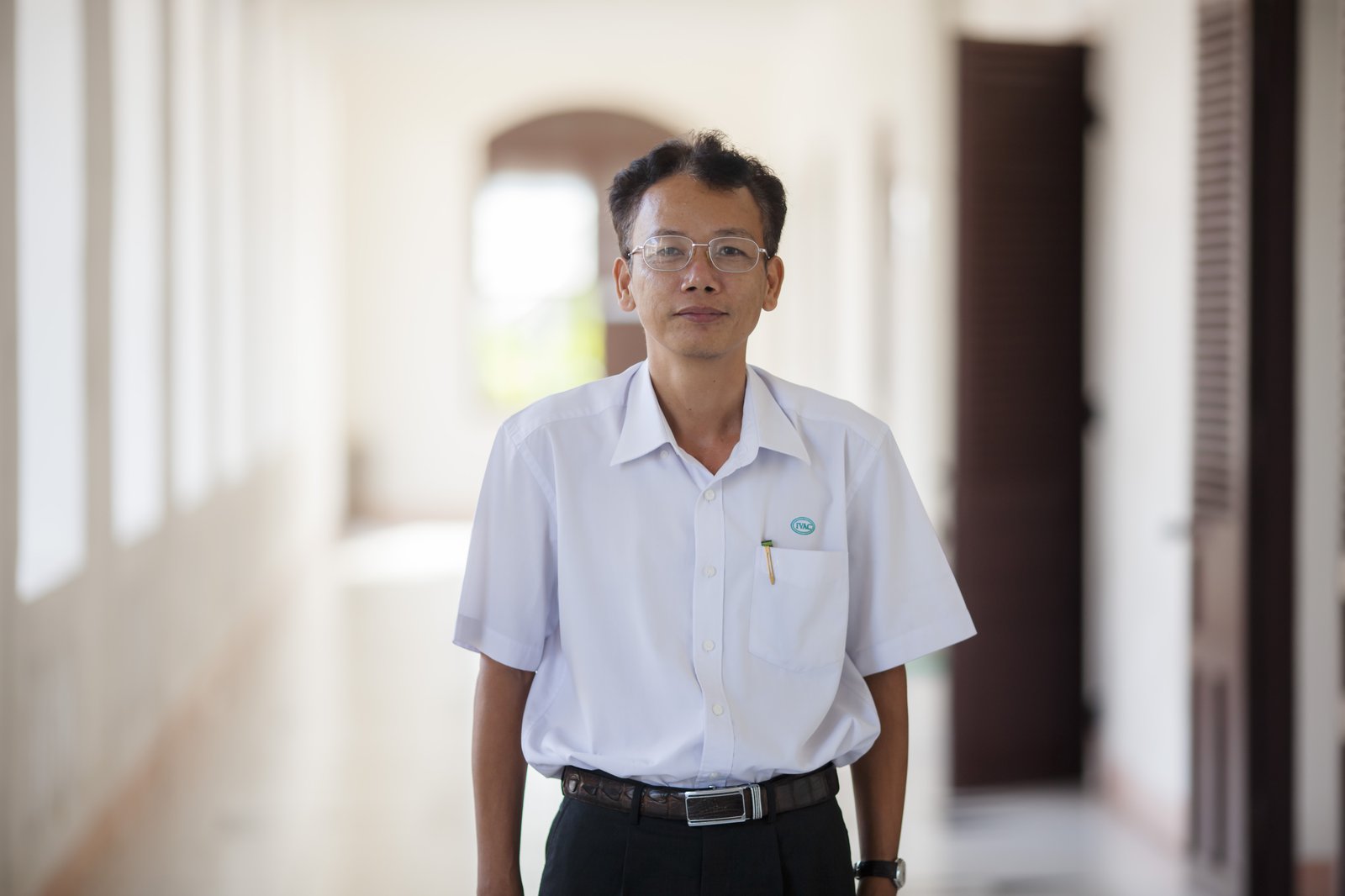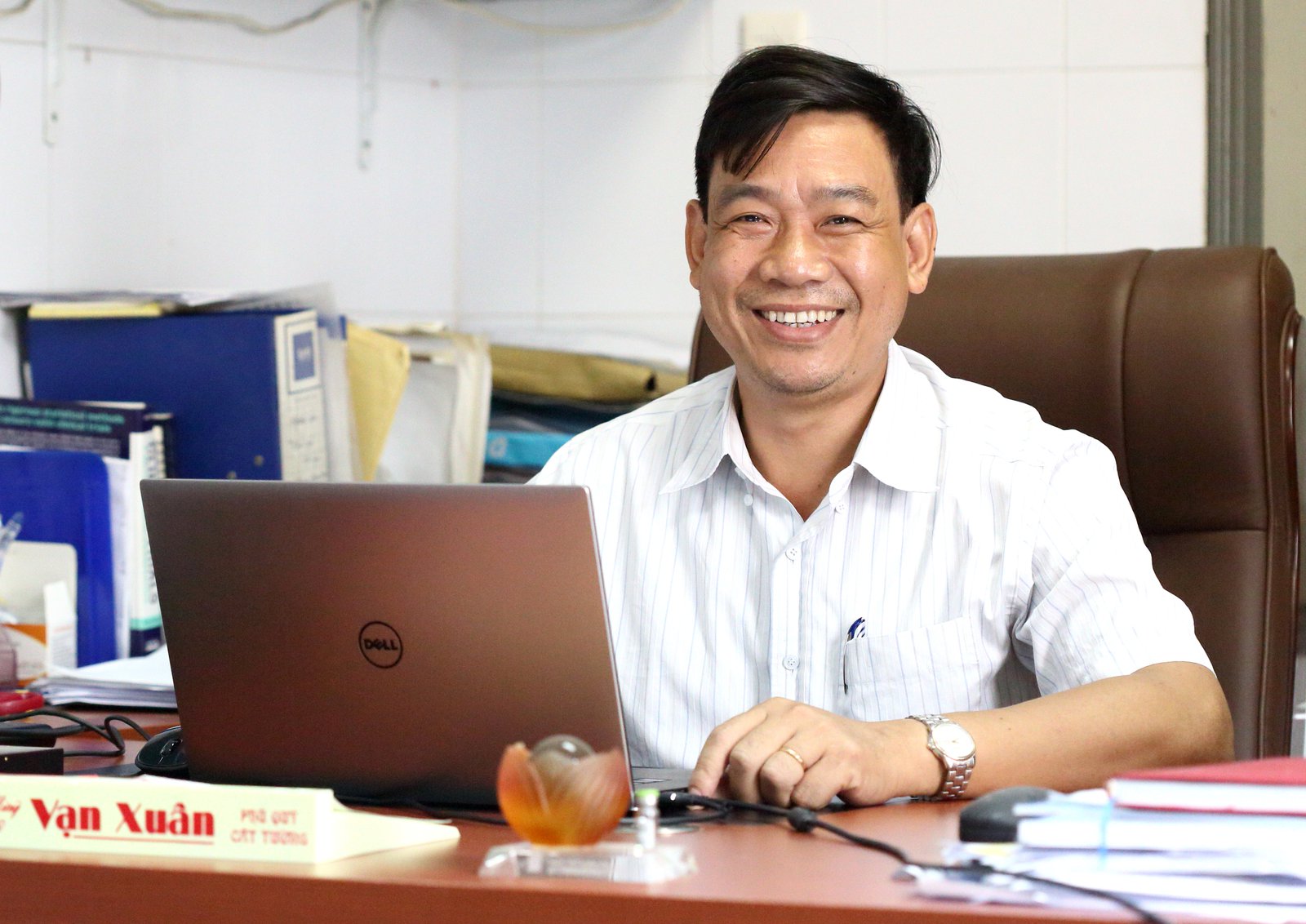Dr. Duong Huu Thai is very frank when he discusses the early days of influenza vaccine development in Vietnam.
“With flu, we started almost from zero,” he says. “We were naïve at the beginning; we had so much to learn, and we could not do it on our own.”
Dr. Thai is the Production Deputy Director for Vietnam’s state-owned vaccine manufacturer, the Institute of Vaccines and Medical Biologicals (IVAC), and he’s responsible for overseeing all vaccine production. As such, he takes a very practical stance on what IVAC has been capable of in the past—and what it will be in the future.
“We have grown up now,” he says. “IVAC is not the same facility it once was.”
IVAC’s influenza vaccine production journey began in 2007 when the World Health Organization (WHO) selected Vietnam to participate in the Global Action Plan for Influenza Vaccines, a comprehensive strategy to reduce the global shortage of seasonal and pandemic influenza vaccines. Under support from that program, IVAC would become an essential vaccine producer not just for Vietnam, but for the region. WHO provided a basic vaccine development plan and framework; it also helped IVAC to build a brand new vaccine production facility and stock it with new equipment—essential needs when creating a vaccine that adhered to an international quality standard.
It is no small thing to develop a vaccine according to international standards—especially when you’ve been operating on national ones for years. National quality standards are by no means lax, but they do have different regulations attached to them. Producing at international standards means, in many cases, altering processes you’ve been following for years. Decades, even. Processes so familiar they feel like second nature. The shift to an international standard not only meant learning new procedures and operating new equipment, it meant changing minds, changing behaviors, and establishing new habits—a challenge, to say the least.
“When we opened the influenza vaccine production facility, it was just myself and seven others who had just graduated from university,” remembers Dr. Thai. “And we realized so quickly that, we couldn’t just give 100 percent or even 110—we had to give 120 percent. We had so much to learn and do.”

Dr. Duong Huu Thai, Production Deputy Director for IVAC, has seen Vietnam's influenza vaccine production capacity grow exponentially over the last nine years. Photo: PATH/Hai Trinh.
In 2009, PATH, in cooperation with WHO and the Biomedical Advanced Research and Development Authority within the US Department of Health and Human Services, launched a project to support influenza vaccine production in Vietnam and started providing technical assistance to IVAC in 2010. PATH supported IVAC as it worked to operationalize the new vaccine development facility; to populate a henhouse and raise chickens (viruses for most influenza vaccines are grown in chicken eggs and a sustainable supply is necessary for commercial-scale production); to conduct trainings on quality control and quality assurance; to develop standard operating procedures for laboratory practices; and generally respond to whatever needs IVAC had.
IVAC staff were committed to learning, and they made measureable improvements. For instance, initially they could only produce one influenza vaccine dose for every chicken egg used; after training, IVAC staff could produce three vaccine doses for every egg.
“We are production guys,” says Dr. Thai. “We did not have many experiences in operationalization for clinical trials or project management or monitoring. But now our teams can stand alone and work independently. They can do it all.”
The skills IVAC gained in pursuit of influenza vaccine development go far beyond just one project: they can be applied to any vaccine in production, and even to operations across the institute. Influenza vaccine production has revolutionized vaccine production, period.
Ten years ago IVAC would have been incapable of responding to an influenza pandemic. Not only was it lacking the capacity to produce vaccine on such a scale, it was lacking the know-how when it came to influenza. Today, IVAC is much closer to being able to mount a successful response. It’s not quite there—production scale is still relatively small given what the need would be in a pandemic—but the knowledge, confidence, and ability to produce a safe, effective influenza vaccine are there. And this is only the start; Dr. Thai is certain that once IVAC’s seasonal vaccine hits the market and begins to create demand, IVAC’s production capabilities will grow and grow—until there will be no question it can protect its people from pandemic.
“In ten years we will be so different, so efficient, so prepared,” he says. “Come back then and ask me what the next ten years will hold. We are so confident, and excited for the future.”
“The skills IVAC gained in pursuit of influenza vaccine development go far beyond just one project: they can be applied to any vaccine in production.”
Raising the profile
Capacity isn’t the only thing the project built; it also helped to bolster reputations. For instance, Dr. Vu Dinh Thiem, head of the clinical trials division at Vietnam’s National Institute of Hygiene and Epidemiology (NIHE), is now in rather high demand for future influenza vaccine clinical trials.
NIHE is the research institute that conducted several clinical trials during the course of the project; it managed the Phase 1 seasonal influenza vaccine study, and the Phase 2/3 A/H5N1 influenza vaccine study. Dr. Thiem served as one of the Principal Investigators (PI) on the A/H5N1 Phase 2/3 clinical studies, which meant he was responsible for overseeing the trial from start to finish, including helping to write the study protocol, hiring and training staff, monitoring study operations, even answering his phone in the middle of the night when worried participants had questions.
“It happens many, many times,” he laughs. “My name and phone number are on the informed consent form, and so they call me whenever they have questions. (Being a PI) is a very high pressure role, with a lot of responsibilities, but this is one of the most important.”
Though Dr. Thiem has conducted numerous large-scale vaccine clinical trials during his 25 years with NIHE, this project marked the first time he or the institute worked with influenza vaccine. And now? He’s already slated to serve as the PI on an upcoming influenza vaccine clinical trial, and has been requested by other manufacturers to do the same in the future. The skills and experience gained through the course of the project have been key to opening up new opportunities and highlighting Vietnam as a player in the global vaccine development market.

Dr. Vu Dinh Thiem, head of the clinical trials division at NIHE, has conducted numerous vaccine clinical trials—but had his first experience with influenza vaccine as part of Vietnam's influenza vaccine development project. Photo: PATH/Nguyen Phu Cuong.
It has also created opportunity to help educate the public on the seriousness of influenza and the importance of seasonal vaccination. In Vietnam, the prevailing attitude toward influenza is a bit contradictory. The public is very aware of the dangers of pandemic influenza, but there isn’t as much concern about seasonal influenza. It is, at most, a nuisance. What’s worse, this opinion isn’t isolated to the public but is common among health workers. A perceived lack of risk is the biggest driver, but some of it could be due to economics; seasonal influenza vaccine isn’t yet included in Vietnam’s routine national immunization program, which means that people have to pay out of pocket if they want it. And because those vaccines are imported, they aren’t cheap.
But this project has already started to change attitudes. Dr. Thiem reports that many people, after they’ve finished participating in a vaccine clinical trial—which they were initially nervous and skeptical about—ask him, “So when is the next trial? Can I be a part of it, too?” And with the vaccine on the road to licensure, the project is poised to change actions, too.
“I think (the seasonal influenza vaccine) will bring a very, very big benefit to the Vietnamese people,” says Dr. Thiem. “Because now we have another choice for vaccine, one that will be more affordable, more accessible. I have hope it will cause more people to get vaccinated, and save many lives.”
Read the entire series
- Defending the world from influenza: As a nine-year project to build vaccine development capacity worldwide come to an end, PATH and partners reflect on how far we've come
- From Vietnam to the world: How PATH helped ready locally-made influenza vaccine for global use
- Duty and pride: A vaccine clinical trial through the eyes of a volunteer
- Vietnam’s vaccine champion: Why Dr. Le Van Be fights influenza
- Building a new influenza vaccine: A longtime vaccine manufacturer conducts its first clinical trial
- The power of local: Can a domestically produced vaccine increase uptake?
Additional resources
- Vietnam welcomes two locally produced vaccines for seasonal and pandemic influenza press release
- Enhancing Influenza Vaccine Development in Low-resource Countries: Pandemic Preparedness Through Seasonal Sustainability report
- Supporting Influenza Vaccine Production in Vietnam fact sheet
- Moving the Needle e-newsletter
- Immunization Matters e-newsletter



